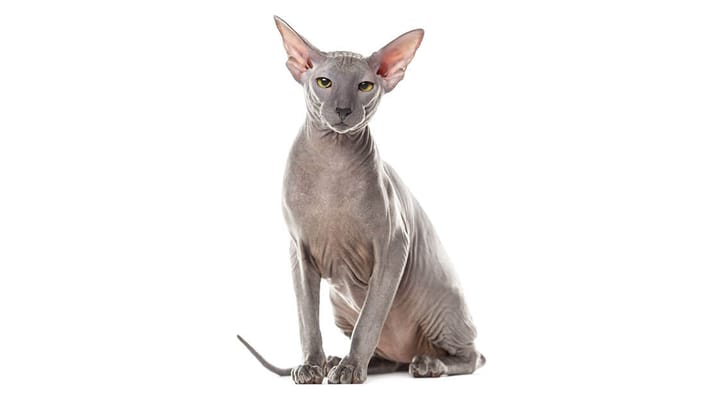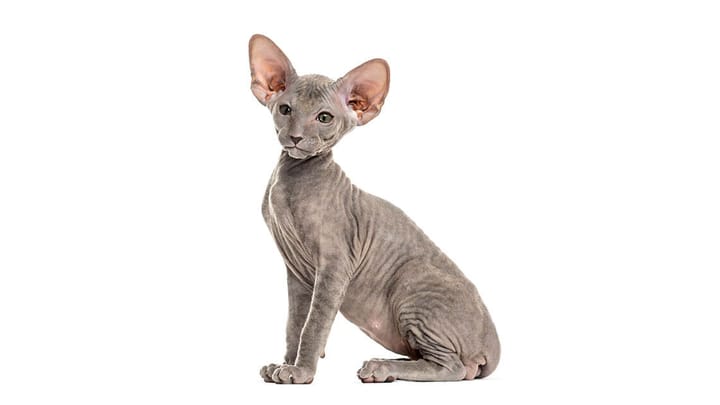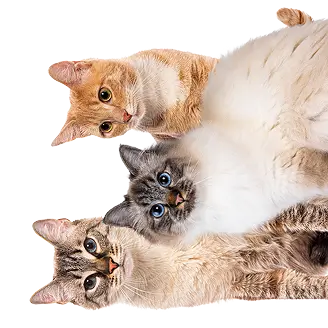Peterbald


An affectionate and chatty ball of energy, this Russian breed wins hearts and minds with their Oriental faces and their almost non-existent coat. A Peterbald’s coat at birth does not represent their fur forever, in fact their coat changes constantly throughout the first two years of their lives.
|
Life expectancy |
The Peterbald has a life expectancy of between 10 and 13 years |
|
Temperament |
|
|
Adult size |
Female
Between 12 and 14 in
Male
Between 12 and 14 in
|
|
Adult weight |
Female
Between 4 and 9 lb
Male
Between 7 and 11 lb
|
|
Coat colour
Black / seal, blue / grey-slate, chocolate, lilac / lilac, cinnamon / cinnamon, fawn / fawn, red, white Peterbalds come in any colour, however their coat patterns are more limited. |
Black Brown White Red Blue |
|
Type of coat
Bald |
Naked Short |
|
Eye colour
Blue, aquamarine, green |
Blue
Green
|
|
Purchase price |
The Peterbald costs approximately 750£ |
The gene responsible for the hair loss in Peterbalds is a dominant gene with variable penetrance. It is still yet to be identified. It is known that completely naked individuals are homozygous and therefore possess the gene on both alleles (they do not have a normal coat gene and can only pass the Peterbald trait onto their offspring.) Heterozygote kittens will always have an altered coat that they can lose and regain during the first few years of their lives. Finally, two heterozygous parents could breed normal furred kittens. The latter do not have the gene that modifies their hair and thus can not pass it on.
More details about the Peterbald
Peterbald: Origins and history
Derived from the crossbreeding of a Donskoy and an Oriental Shorthair, the Peterbald was created in 1994 by Olga S. Mironova, a Russian breeder living in St. Petersburg. She wanted to create a cat whose oriental traits could be emphasised by a lack of fur. The breed was named after its hometown. Although cross breeding between Donskoy and Orientals is now banned, the Don's Sphynx is now a well established new naked breed.
Physical characteristics of the Peterbald
An Oriental-type cat, Peterbalds are long and slim. Their heads are shaped like elongated triangles, accentuated by their large ears and almond-shaped eyes. They have a long and elegant neckline and their tubular bodies are muscular. Their legs are thin and slender and their tail resembles a long whip.
But it is this Russian cat’s coat that distinguishes it from other breeds! It varies hugely depending on the individual, as well as varying throughout the life of an individual cat. They can be completely naked (Naked or bald). They can be covered with a fine down of hair, resembling a fuzzy peach skin (Chamois or Flock). They can have a coat of short fine/fluffy hairs (known as Velour). Another possibility is a harder hair which is curly and shaggy but still quite patchy and sparse (Brush). Finally, some members of this breed have standard hair as they lack the bald genes (Straight).
Peterbald kittens start their lives with fur, however they will begin to lose their hair around 2 months, and will constantly transition between the different hair types until approximately the age of 2.
Peterbald: Characteristics
Peterbald: Behaviour
Breed compatibility Peterbald
Peterbald: Purchase price
The average price for a Peterbald is approximately £750. Their price varies depending on their hair type, lineage (parental pedigree) and age.
It costs on average £30/ month to provide for their needs, in order to purchase quality bedding and food.
Peterbald: Grooming
Although one might think that an almost naked cat does not require any grooming, the Peterbald tends to sweat a lot and may therefore require a weekly bath.
Peterbald: Health
Life expectancy of 10-13 years
As with most naked cats, they tolerate the cold or extreme heat poorly and must be protected from the sun.
The breed isn’t known for being overweight, however there can be exceptions to the rule.
Progressive retinal atrophy: This causes a loss of vision that can lead to complete blindness. (There is a screening test that can be done.)
Periodontal diseases, often related to lack of dental care.
They can also develop common diseases and infections that affect all cats, and are slightly more susceptible to skin problems.
A Peterbald may be crossbred with another Peterbald, an Oriental or a Siamese. In all these cases, the kittens are recognised as Peterbalds and most will have the typical traits of the breed.
Do you want a Peterbald cat ?
1 comment
-
1 comment out of 1
Are you sure you want to delete the comment?






